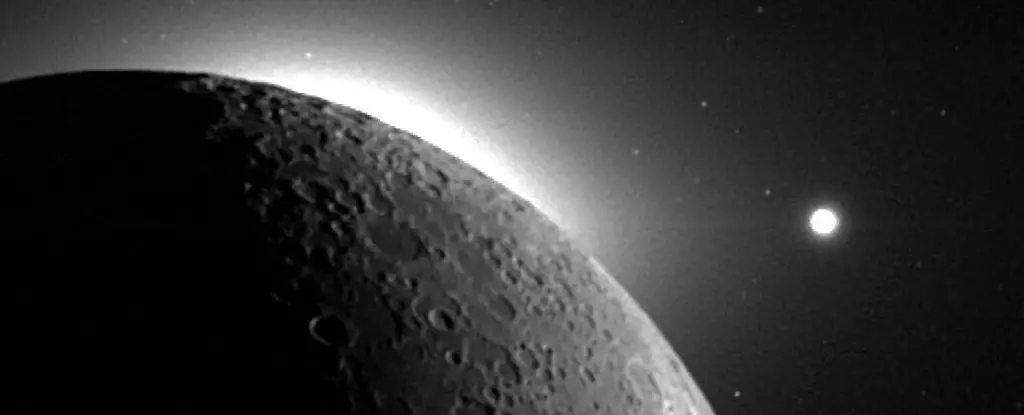The Earth-Moon system presents an enigma that has puzzled scientists for centuries. Unlike other celestial bodies in our Solar System, Earth’s unique relationship with its Moon stands out, both in its singularity and complexity. This article dives into the various theories about the Moon’s origin and the implications these theories hold for our understanding of planetary formation.
In our Solar System, planets exhibit a variety of moon configurations: while some host numerous natural satellites, others have none. Earth, in contrast, is accompanied by a single, notably large Moon. This distinct mass ratio raises an essential question regarding how this relationship evolved. Primarily, the leading theories propose that the Moon is a direct progeny of Earth, a product formed from debris during a colossal impact event. This notion is encapsulated in the well-known Giant Impact Hypothesis, asserting that a significant collision generated a cloud of material that eventually coalesced into the Moon.
However, this theory, while prevalent, does not enjoy unchallenged acceptance. Scientific discourse has recently introduced alternative perspectives regarding the Moon’s genesis, suggesting that it may have originated elsewhere in our Solar System and was subsequently captured by Earth’s gravity. This fresh perspective introduces the possibility of gravitational capture as a viable cause for the Earth-Moon dynamic.
Recent findings by astronomers Darren Williams and Michael Zugger from Pennsylvania State University propose that gravitational interactions could provide an alternative lens through which to view the Moon’s origin. Their study indicates that if the conditions are right, a newly formed or existing celestial body could be captured by Earth’s gravitational pull. This notion hinges on the idea of gravitational binding, wherein passing bodies can latch onto one another under specific angles and velocities.
Interestingly, binary capture models present compelling cases for such interactions. In these scenarios, two gravitationally connected bodies can encounter a third celestial object, which may then take one of the original pair, effectively creating a new orbital relationship. This has been illustrated in the case of Triton, Neptune’s largest moon, which is thought to be captured from the Kuiper Belt, orbital characteristics distinctly pointing towards a tumultuous past.
The value of the Earth-Moon relationship lies not only in its unique dynamic but also in its geological similarities. Both Earth and the Moon share strikingly similar mineral compositions, suggesting a shared origin. Just as the Giant Impact Hypothesis explains this similarity through collision-generated debris, alternative theories must provide robust explanations if they hope to gain traction.
Moreover, Williams and Zugger’s propositions are supported by mathematical modeling, which confirms the feasibility of Earth capturing a Moon-sized body. Interestingly, their calculations suggest that even larger bodies could have been ensnared, though the long-term stability of such orbits remains questionable. Current observations indicate that the Moon’s orbit is both elliptical and gradually stabilizing—a norigination truly worthy of further exploration.
Nevertheless, while the capture scenario raises intriguing questions, it does not satisfactorily elucidate the composition similarities between Earth and its Moon. These physical characteristics still better synchronize with the notion of a more intimate formation process.
Understanding the Moon’s origins goes beyond mere curiosity; it holds profound implications for the search for exoplanets and the potential for life beyond Earth. The Moon’s presence is thought to have significantly influenced Earth’s environment—from moderating axial tilt to contributing essential factors for life’s emergence. Therefore, a deeper comprehension of our Moon’s formation may offer crucial insights into other planetary systems and their configurations throughout the galaxy.
Williams succinctly states, “No one knows how the Moon was formed.” This uncertainty drives scientific inquiry, demonstrating that we are continuously evolving our comprehension of cosmic mechanics. The debate between the traditional Giant Impact Hypothesis and the increasingly recognized gravity capture scenario represents a fertile ground for research. As scientists push boundaries, they may unlock new pathways for understanding how celestial bodies interact and evolve.
The origins of the Moon are not merely an academic concern; they provide a window into the nature of planetary evolution and the parameters that govern stability and life-sustaining conditions. As our knowledge base expands, we may harvest insights that not only refine our understanding of our immediate astronomical neighborhood but also guide humanity’s quest for life in distant corners of the universe. The quest for answers regarding our Moon offers a reflection of our broader quest for knowledge—a pursuit that is as eternal as our gaze toward the night sky.


Leave a Reply